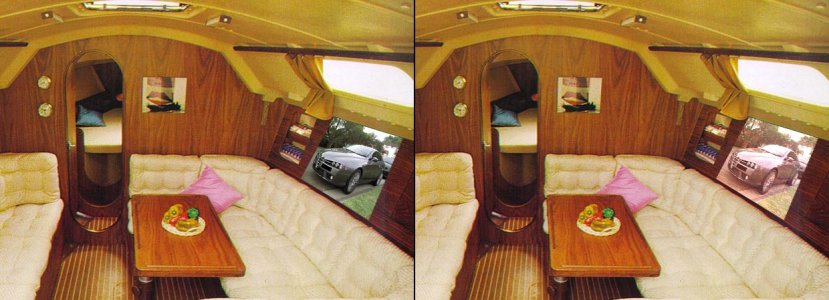I am hugely sceptical of what we see here. What we see on the screen looks to have been composited over the video feed differently to the way it would work through HoloLens. Unless they have some method of blocking incoming light on a pixel-by-pixel basis, nothing you see will ever be darker than what's behind it because HoloLens will simply be adding light to what's in front of you. So where we see solid, full spectrum colour in the video, I think you will see washed-out, translucent objects in reality.
It will always work best in darker environments, which is pretty much what we saw in the journalist demos in January, where both the living room game and light switch demos seemed to have been in pretty dark spaces. I'm sure it will still work outdoors, partly because of the tinted outer lens, but only for some things e.g. I doubt anyone will be walking down the street or sitting on the bus watching Game Of Thrones.
Here's an example. On the left you see a normal composite of a photo of my old car on the starboard side of the dinette. On the right is the same image but using Add mode to sum the values of the pixels of foreground and background, which is how HoloLens will work. It's not terrible in this situation but it's nothing like what they showed at this presentation, either.

Don't get me wrong, none of this dampens my enthusiasm for HoloLens one bit. I'll still be first in line for one, no matter how much they cost, I just think everyone needs to keep their expectations reasonable.


